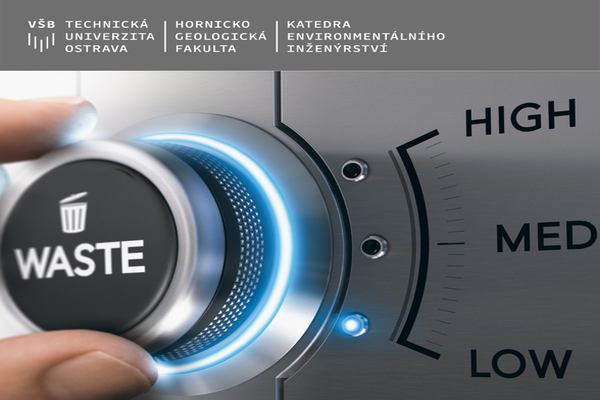1. Definition of issues. Basic concepts. Information retrieval processes. Basic division of analytical methods with focus on environmental analysis.
2. Analysis process - general curriculum: problem formulation and solution design, sampling of environmental components (water, soil, air, waste, green matter, PM etc.), sample preparation before analysis, separation and concentration steps, and the expression of the results of the analysis, the design of the activity resulting from the data obtained.
3. Sampling, sampling, error sources. Standard operating procedures for sampling; QA / QC system.
4. Basic parameters of sampling of abiotic and biotic matrices of the environment. Air sampling, including passive sampling; sampling PM.
5. Sampling of drinking and surface water; sampling of sediments; sampling of underground and waste water; sampling of sludge from sewage treatment plants; sampling of the pedosphere.
6. Sampling of biotic matrices. Waste sampling
7. Modify the sample before analysis. Nondestructive methods. Destructive methods: dissolution and decomposition of samples, mineralizers.
8. Separation and concentration steps: elimination of interferences by chemical means and physical separation. Separation methods: division according to principle and experimental arrangement. Extraction. Separation on ion exchangers. Effectiveness of the separation process.
9. Evaluation of analytical results and procedures and expression of analysis results. Statistical processing of results. Activity design resulting from the data obtained. Principles of Good Laboratory Practice. Fundamentals of chemometry.
10. Fundamentals of qualitative analysis: classical system of cation division - hydrogen sulfide system, analytical classes of anions. Additional criteria for determining anions. Evidence of heteroatoms in organic matter.
11. Overview of basic analytical methods and their general properties: methods based on weighing, volume measurement. Degradative analysis - gravimetry: gravimetry principle, analytical utilization. Basic steps of analysis: sample preparation, precipitation, clot maturation, washing and filtration, drying and annealing, clot weighing, concentration calculation. Applications in environmental component analysis; Advantages, disadvantages.
12. Quantitative chemical analysis. Volumetric analysis: general assay procedure, determination of the end point of titration, titration curves, calculation of analyte content from titration data. Types of measurement and their application: acidobase titration, precipitation titration, complexometric titration, redox titration. Principle, analytical use.
13. Development trends in analytical chemistry - mobile analytics.
2. Analysis process - general curriculum: problem formulation and solution design, sampling of environmental components (water, soil, air, waste, green matter, PM etc.), sample preparation before analysis, separation and concentration steps, and the expression of the results of the analysis, the design of the activity resulting from the data obtained.
3. Sampling, sampling, error sources. Standard operating procedures for sampling; QA / QC system.
4. Basic parameters of sampling of abiotic and biotic matrices of the environment. Air sampling, including passive sampling; sampling PM.
5. Sampling of drinking and surface water; sampling of sediments; sampling of underground and waste water; sampling of sludge from sewage treatment plants; sampling of the pedosphere.
6. Sampling of biotic matrices. Waste sampling
7. Modify the sample before analysis. Nondestructive methods. Destructive methods: dissolution and decomposition of samples, mineralizers.
8. Separation and concentration steps: elimination of interferences by chemical means and physical separation. Separation methods: division according to principle and experimental arrangement. Extraction. Separation on ion exchangers. Effectiveness of the separation process.
9. Evaluation of analytical results and procedures and expression of analysis results. Statistical processing of results. Activity design resulting from the data obtained. Principles of Good Laboratory Practice. Fundamentals of chemometry.
10. Fundamentals of qualitative analysis: classical system of cation division - hydrogen sulfide system, analytical classes of anions. Additional criteria for determining anions. Evidence of heteroatoms in organic matter.
11. Overview of basic analytical methods and their general properties: methods based on weighing, volume measurement. Degradative analysis - gravimetry: gravimetry principle, analytical utilization. Basic steps of analysis: sample preparation, precipitation, clot maturation, washing and filtration, drying and annealing, clot weighing, concentration calculation. Applications in environmental component analysis; Advantages, disadvantages.
12. Quantitative chemical analysis. Volumetric analysis: general assay procedure, determination of the end point of titration, titration curves, calculation of analyte content from titration data. Types of measurement and their application: acidobase titration, precipitation titration, complexometric titration, redox titration. Principle, analytical use.
13. Development trends in analytical chemistry - mobile analytics.
